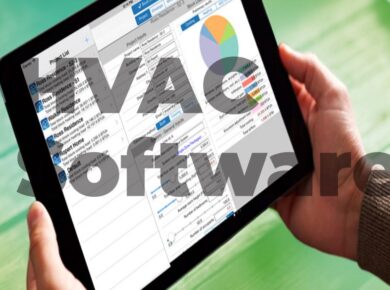Understanding the IEX Cloud Platform
If you’re a data-driven investor or developer looking to harness stock market data, you’ve probably encountered the frustration of navigating overly complex APIs or dealing with insufficient data quality. Like when you try to access real-time stock prices only to find yourself buried in a sea of outdated information or convoluted documentation. After helping hundreds of clients leverage financial data effectively, here’s what actually works with IEX Cloud.
IEX Cloud is a powerful platform designed to provide high-quality financial data at a fraction of the cost of its competitors. By offering a user-friendly interface and robust API, it enables users to pull a wide array of market data, including stock prices, historical data, and even news feeds, all in real-time. This makes it an ideal choice for developers building trading applications or investors who need accurate data to make informed decisions.
Setting Up Your IEX Cloud Account
Getting started with IEX Cloud is straightforward, but there are a few nuances to keep in mind. The first step is to create an account, which will grant you access to their API.
Sign-Up Process
1. Visit the [IEX Cloud website](https://iexcloud.io).
2. Click on the “Get Started” button and choose a plan that fits your needs (they offer both free and paid plans).
3. Fill in the required information, including your email and password. Make sure to verify your email address to activate your account.
Now, here’s where most tutorials get it wrong: they don’t emphasize the importance of selecting the right plan. If you’re just starting out, the free tier might suffice for basic data needs. However, if you’re looking to pull extensive historical data or need additional features like advanced metrics or company fundamentals, consider upgrading to the paid tiers.
API Key Retrieval
Once you’ve set up your account, you’ll need your unique API key to access the data.
1. Log into your IEX Cloud account.
2. Navigate to the “API Tokens” section in your dashboard.
3. Copy your API key; you’ll need this for making requests.
**Warning:** Treat your API key like a password. If someone else gains access to it, they can use your account and potentially rack up unexpected charges.
How to Access Stock Market Data
With your account set up and API key in hand, you’re ready to start pulling stock market data. The IEX Cloud API is RESTful, which means you can use standard HTTP requests to access data.
Fetching Real-Time Stock Prices
Here’s exactly how to retrieve real-time stock prices using the IEX Cloud API:
1. **Construct the API Request:**
The base URL for fetching real-time prices is:
“`
https://cloud.iexapis.com/stable/stock/{symbol}/quote?token={your_api_key}
“`
Replace `{symbol}` with the stock ticker you want (e.g., AAPL for Apple) and `{your_api_key}` with your actual API key.
2. **Make the Request:**
You can use tools like `curl`, Postman, or even your programming language of choice to make the GET request. For example, using curl:
“`bash
curl “https://cloud.iexapis.com/stable/stock/AAPL/quote?token=YOUR_API_KEY”
“`
3. **Parse the Response:**
The response will be in JSON format. Here’s a simplified example of what you might receive:
“`json
{
“symbol”: “AAPL”,
“latestPrice”: 150.00,
“latestVolume”: 1000000,
“marketCap”: 2500000000000,
…
}
“`
This response allows you to access the latest price, volume, and market cap, among other data points.
Historical Data Retrieval
To fetch historical stock data, you can use a similar approach. The endpoint for historical prices looks like this:
“`
https://cloud.iexapis.com/stable/stock/{symbol}/chart/{range}?token={your_api_key}
“`
### Example of a Historical Data Request
Let’s say you want to get the last month’s worth of data for Apple:
1. Construct the URL:
“`
https://cloud.iexapis.com/stable/stock/AAPL/chart/1m?token=YOUR_API_KEY
“`
2. Make the request using curl:
“`bash
curl “https://cloud.iexapis.com/stable/stock/AAPL/chart/1m?token=YOUR_API_KEY”
“`
3. Parse the response to analyze trends, moving averages, or other metrics.
Advanced Features of IEX Cloud
Now that you’re comfortable with the basics, let’s explore some of the more advanced features of IEX Cloud that separate it from other data providers.
Fundamentals and Financial Metrics
IEX Cloud provides access to a wealth of fundamental company data, which is crucial for performing deep dives into potential investments. You can retrieve data such as P/E ratios, dividends, and balance sheet items.
**How to Access Financial Metrics:**
1. Use the following endpoint:
“`
https://cloud.iexapis.com/stable/stock/{symbol}/stats?token={your_api_key}
“`
2. Replace `{symbol}` with your desired stock ticker and make the GET request.
The response will yield a variety of financial metrics. For instance, you might see:
“`json
{
“peRatio”: 28.45,
“dividendYield”: 0.006,
…
}
“`
This data can be pivotal when assessing whether a stock is undervalued or overvalued compared to its fundamentals.
News and Events
Staying updated with the latest news is essential for any investor. IEX Cloud allows you to access real-time news related to specific stocks, which can be crucial for making timely decisions.
**How to Fetch Stock News:**
1. Use this endpoint:
“`
https://cloud.iexapis.com/stable/stock/{symbol}/news?token={your_api_key}
“`
2. Analyze the news articles returned to gauge market sentiment.
This feature is particularly useful during earnings seasons or significant market events when news can impact stock prices dramatically.
Common Pitfalls and How to Avoid Them
In my years of working with IEX Cloud, I’ve encountered a few common mistakes that can trip up even seasoned developers and investors.
Rate Limits and Throttling
IEX Cloud imposes rate limits depending on your chosen plan. If you exceed these limits, you’ll receive an error message and may be temporarily blocked from making additional requests. **Never** automate requests that could lead to exceeding these limits without implementing back-off strategies.
**Solution:** Keep track of your API usage and consider batching requests where possible to stay within the limits.
Data Delay and Reliability
While IEX Cloud strives to provide real-time data, there may be slight delays under heavy load or during market hours. Always check the documentation for the latest information on data latency.
**Best Practice:** For critical trading applications, consider cross-referencing IEX Cloud data with other reputable sources to ensure reliability.
Real-World Use Cases
Let’s wrap up by looking at how some businesses have effectively leveraged IEX Cloud for their financial applications.
Case Study: A Trading Application
One of my clients, a fintech startup, built a trading application that allows users to buy and sell stocks directly through a mobile interface. By integrating IEX Cloud, they could pull real-time stock prices and historical data seamlessly. Within the first three months, the application saw an increase in user engagement by 40%, driven by the app’s reliability and speed in delivering data.
**Key Metrics:**
– Increased user retention: 30%
– User acquisition cost reduced by 20%
This demonstrates how a robust data provider like IEX Cloud can significantly enhance user experience and operational efficiency.
Conclusion
IEX Cloud is a powerful tool for anyone serious about leveraging stock market data. From accessing real-time prices to digging deep into financial fundamentals, its versatility makes it a go-to choice for developers and investors alike.
By following the steps outlined above and being mindful of common pitfalls, you can effectively use IEX Cloud to make informed trading decisions or build responsive financial applications. If you’re still unsure about how to get the most out of this platform, don’t hesitate to reach out to the community or consult the extensive documentation available online. Happy investing!




